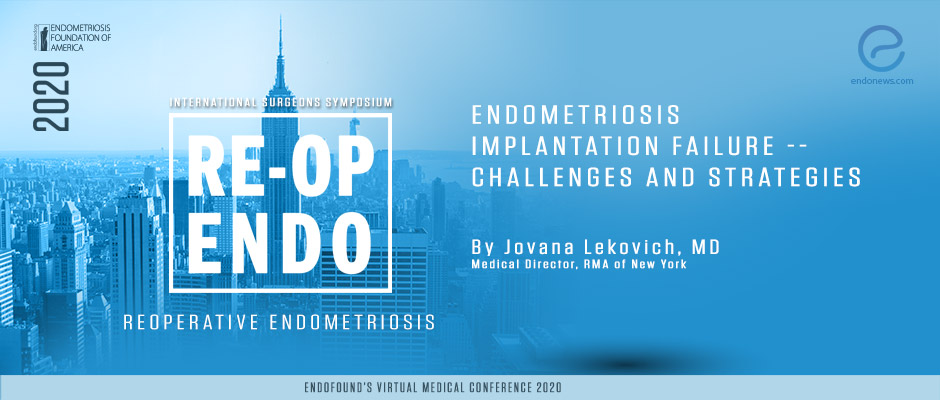The effect of glucocorticoid use on clinical pregnancy rates
The preference to use glucocorticoids such as dexamethasone, prednisone, and methylprednisolone, along with IVF-ET cycles is due to the diminishing inflammatory response and suppressing immunity. Thus, while autoimmune diseases are suppressed with glucocorticoid administration, the success rate in the implantation…
Key Points Lay SummaryComparison of different IVF stimulation protocols for pregnancy success in infertile endometriosis patients
Women with endometriosis may suffer from reproductive problems up to an incidence of 50%. Several pathophysiological mechanisms including anatomic distortion, alterations in endometrial receptivity, diminished tubal peristalsis and sperm movements are the most responsible for the development of endometriosis-associated infertility.…
Key Points Lay SummaryThe optimal endometrial preparation protocol in FET cycles of women with endometriosis.
Endometriosis can create infertility and may require treatment with assisted reproductive technology (ART) to induce pregnancy. However, the current literature rarely discusses the optimal endometrial preparation protocol in thawed-frozen embryo transfer (FET) cycles for endometriotic patients. Dr.Jin. group from the Reproductive…
Key Points Lay SummaryThe Oocyte Quality in Ovarian Endometriosis
Endometrioma is the ovarian involvement of endometriosis affecting up to 44% of women diagnosed with the disease. Owing to the anatomical locus, ovarian endometriosis may impair folliculogenesis and oocyte competence, differing from other forms of endometriosis. When investigating the relationship between…
Key Points Lay SummaryHow does adenomyosis affect IVF outcomes?
Adenomyosis is defined as the localization of endometrial tissue in the muscle layer of uterus. Several theories have been proposed to explain the reasons of adenomyosis-associated infertility including uterine dysperistalsis, abnormal transportation of sperm in the uterine cavity, and embryo…
Key Points Lay SummaryLive Birth Rate in Women Who Underwent Fresh Embryo Transfer Using Freshly Retrieved Donor Oocytes
One of the important clinical findings in women with endometriosis is reproductive problems. Infertility can be encountered in up to 50% of women with endometriosis and up to 50% of women with infertility can be diagnosed with endometriosis. Several pathophysiologic…
Key Points Lay SummaryImplantation failure in endometriosis patients - Jovana Lekovich, MD., PhD.
Endometriosis is one of the leading reasons for infertility due to decreased oocyte/embryo quality, fertilization ability, tubal function, and aberrant endometrial receptivity. Whether this failure is caused by oocyte/embryo or eutopic endometrium is one of the investigated topics in endometriosis…
Key Points Lay SummaryIn vitro fertilization protocols in endometriosis patients - Pinar Kodaman, MD., PhD.
Infertility is frequently encountered in endometriosis patients because of anatomic distortion, alterations in endometrial receptivity, diminished tubal peristalsis, and sperm movements. Even though the disease stage and presence of endometrioma is negatively correlated with infertility, it is unpredictable which women…
Key Points Lay SummaryThe predictive factors for early spontaneous miscarriage in IVF/ICSI cycles
The most common presenting complaints of endometriosis are mainly dysmenorrhea, dyspareunia, chronic pelvic pain, and infertility. Affected women demand therapy for these symptoms of endometriosis, notably fertility problems. The clinical pregnancy rate has increased up to 60% in assisted reproductive…
Key Points Lay SummaryA new trial to reduce the failure of IVF/ICS protocols in severe endometriosis
Kong et al., from the first affiliated hospital of Zhengzhou University, China, recently published this single-blinded, a multicentered and randomized controlled study in the Journal of Reproductive Health, with the aim to find a safer and more effective ovulation induction regimen for patients with…
Key Points Lay SummaryICSI Outcomes for Laparoscopic Intervention of Endometriosis
Women with endometriosis can have trouble conceiving and often turn to fertility treatments for help. Guler et al. recently published a paper in Systems Biology in Reproductive Medicine titled “The Impact of laparoscopic surgery of peritoneal endometriosis and endometrioma on…
Key Points Lay Summary
 By Selma Oransay
By Selma Oransay

 By Hale Goksever Celik
By Hale Goksever Celik









 By Kasthuri Nair
By Kasthuri Nair